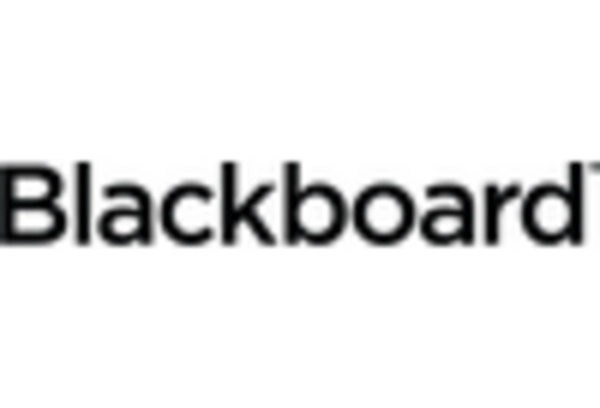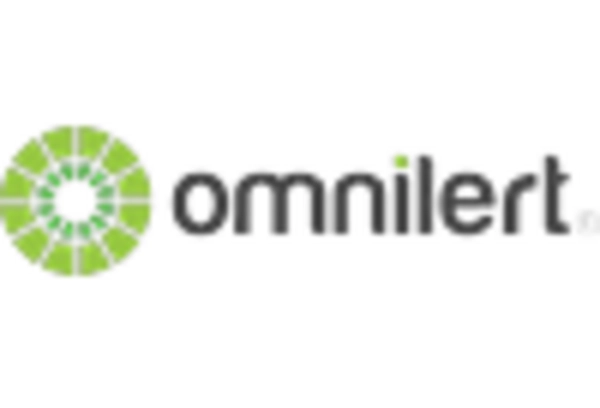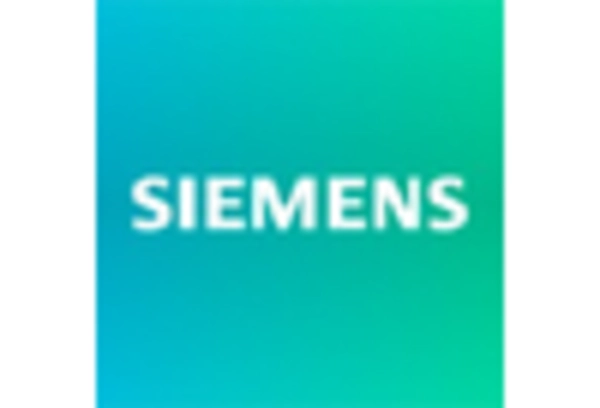Growing Urbanization
The rapid urbanization in South Korea is a crucial driver for the mass notification-system market. As more people migrate to urban areas, the need for effective communication systems becomes paramount. Urban centers are often densely populated, making it essential to disseminate information quickly during emergencies. The mass notification-system market is projected to grow as municipalities invest in advanced communication technologies to ensure public safety. According to recent data, urban areas in South Korea are expected to see a population increase of approximately 10% by 2030, further emphasizing the necessity for robust notification systems. This trend indicates a growing demand for integrated solutions that can handle large volumes of messages efficiently, thereby enhancing the overall effectiveness of emergency response protocols.
Rising Security Concerns
In light of increasing security threats, the mass notification-system market is experiencing heightened demand in South Korea. The government and private sectors are prioritizing safety measures, leading to investments in advanced notification systems. Recent statistics suggest that incidents related to public safety have risen by 15% over the past five years, prompting organizations to seek reliable communication solutions. The mass notification-system market is likely to benefit from this trend as businesses and government agencies implement systems that can deliver timely alerts to mitigate risks. Enhanced security measures, including real-time alerts and automated messaging, are becoming essential components of emergency preparedness strategies, thereby driving market growth.
Technological Integration
The integration of advanced technologies into existing communication frameworks is a significant driver for the mass notification-system market. In South Korea, organizations are increasingly adopting cloud-based solutions and IoT devices to enhance their notification capabilities. This technological shift allows for real-time data processing and improved message delivery efficiency. The mass notification-system market is projected to expand as companies leverage these technologies to create more responsive and adaptive communication systems. With an estimated 30% of businesses in South Korea planning to upgrade their notification systems by 2026, the market is poised for substantial growth. This trend indicates a shift towards more sophisticated solutions that can cater to diverse communication needs.
Government Initiatives and Funding
Government initiatives aimed at enhancing public safety are a vital driver for the mass notification-system market. In South Korea, various programs are being launched to support the development and deployment of advanced notification systems. Funding from government sources is increasingly directed towards improving communication infrastructure, particularly in high-risk areas. Recent allocations indicate that approximately $50 million will be invested in upgrading emergency communication systems over the next three years. This financial support is likely to stimulate growth in the mass notification-system market, as local governments and agencies adopt new technologies to improve their emergency response capabilities. The emphasis on public safety is expected to create a favorable environment for market expansion.
Increased Awareness of Emergency Preparedness
There is a growing awareness of the importance of emergency preparedness among South Korean citizens, which is positively impacting the mass notification-system market. Educational campaigns and government initiatives are fostering a culture of readiness, leading to increased investments in notification systems. Recent surveys indicate that over 60% of the population now recognizes the need for effective communication during emergencies. This heightened awareness is likely to drive demand for mass notification systems, as organizations seek to ensure that their communication strategies align with public expectations. The mass notification-system market is expected to thrive as more entities prioritize the implementation of comprehensive emergency communication plans.

















Leave a Comment